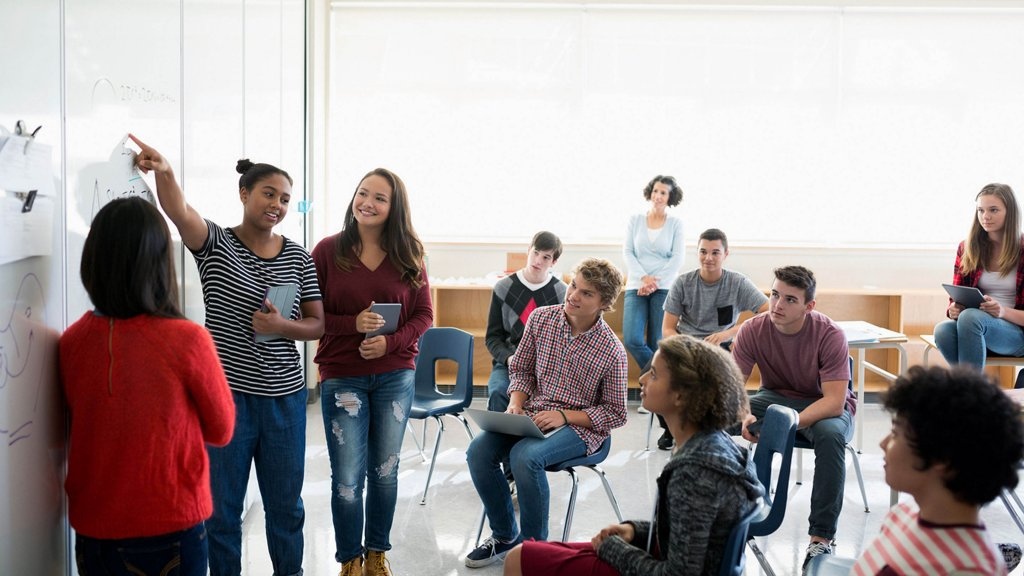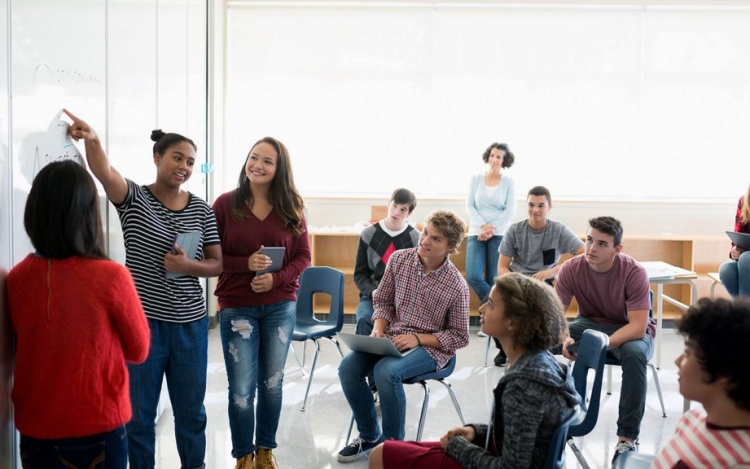Abstract:
Many students feel uncomfortable when given assignments to work in groups. However, student collaboration through groups has been realized to be good for students.
Content:

Group work is centered in such a way that knowledge is a shared construct and is an integral part of the culture. Collaborative work is based on some principles, for example
- Student being the primary focus of instructions given
- Taking into consideration interaction
- Acknowledging working in groups
Group work can be done peer-to-peer or in larger groups, students functioning in pairs or small teams to share ideas or find answers to problems.
Advantages of collaborative education are:
- Promote intercommunication between students from different schools
- Groups have more information than an individual
- Collaborative learning stimulates creativity
- It is easy to remember group discussion
- It enhances better understanding among students themselves
- Collaboration work is more valued during employment
Team Size
The size of the team is a crucial factor in collaboration work. Three or more people can form a small group; a group of two is not encouraged because they are not able to generate creativity and diversity of ideas. Generally, it is suggested that a collaboration of four or five students tends to work well. Although, three or four members are appropriate. Large groups are not encouraged because it limits members’ opportunities to share and sometimes leads in other members not participating enough to the team.
Collaboration work can be advantageous for classes with a large number of students. It has been found that collaborative learning helps students feel the presence of educators by reducing the membership which encourages them.
Examples of group work activities are:
- Catch-up
- Case study
- Team-based learning
- Group problem-solving
Forming Groups
Assigning the members of the group is very important because it determines successfulness or failure. Allowing students to form their groups is not encouraged, it will likely result in uneven groupings. It is advisable to do a preliminary assessment of the students before assigning groups and based on the results, purposefully form groups that blend abilities and consider their effort. Instructors can assign groups by taking into consideration performance levels, academic capabilities and weaknesses, ethnic groups and gender balance.
Managing Group Work
- Introducing the task
- Providing students with enough time to engage with the task assigned
- Debrief by ensuring students share summary of their conclusions
- Ensure students establish ground rules that govern them and their work
- Assigning roles to individuals of every team and alterationof their roles periodically
How to Evaluate Group Work
Team work can lead to writing of proposals, hearsays of case studies, posters, wikis, and in-class or video exhibitions and posters.
- Students evaluation should be done both on their contributions to collaboration processes and final product
- Form anexhaustiveclarification of what your prospects are
- Provides scores for members as well as teams
Conclusion
There is good information about collaborative learning and advantages of group work. Students deeper learning themes and developing skills such as writing and communication skills
Author Bio
This article has been authored by Salina Davis. She is a research paper writer who is experienced in research writing and Best Essay Writing Service. She has been working in the field for over nine years, writing research papers for students in all levels of education.




